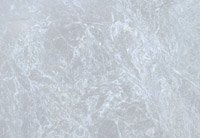Choose Business Card Paper That Elevates Your DIY Business Cards
Has someone handed you a homemade business card? Could you immediately tell that the person made it themselves? I have and it didn't give me a good impression of that person's business.
If you are making your own business cards at home, the ultimate goal is to make them look as professional as possible.
How can you achieve a professional look?
Aside from the design, the paper you choose to print your business cards on can be the deciding factor in whether your cards look professionals or not.
As a former print designer, I've made lots of business cards. I'll share some pro tips about paper options so you can make your own business cards look professional.
How to Enhance the Look of Your Business Card
There are a lot of paper options out there. Narrow down your best options by considering the qualities you should look for in a paper - thickness, perforation style, texture, and brightness.
Choose Thick Paper
At the top of my list is the paper's thickness. If you want your DIY business card to have a professional feel, you need to use a thick card stock. In my print shop days, we would use at least an 80lb cover stock or card stock.
Not only does thick paper give off a professional look, thick card stock paper is:
- durable and sturdy - making you look dependable (a direct reflection of you).
- the standard for all business cards, so using something less than cheapens the look of your business image.
Pick The Right The Perforation Style
If you opt to use pre-cut or perforated business card paper, pay attention to the perforation style. Why?
Because business cards that have a feathered edge are a dead giveaway that you have printed your own business cards.
Pick a card stock that's cleanly perforated to leave a straight cut edge like a print shop.
If you want a paper that's close to print shop quality, I recommend using Avery Business Card paper. They sell a line of business card paper called Clean Edge for both inkjet and laser printers. You can find this paper in most office supply stores and online.
Avery's business card paper uses a new perforation technique that makes it look like your business cards have been professionally cut, instead of torn apart.
Here are a few options you can buy on Amazon.
Standard Thickness (80lb)
Heavyweight Option
For Laser Printers
Consider The Brightness
The main reason brightness is an important factor in choosing paper is that it can effect the appearance of ink colors. Hence darker papers will make ink colors appear darker.
On paper packages, you typically see it say bright white, ivory, etc.
This is and important factor to think about especially if you have a picture, or a signature color you want to use. Plan to make adjustments to your colors if you get darker or colored paper.
Go For Texture or Patterns (Optional)
 Example of marbled paper.
Example of marbled paper.This isn't for everyone but textured or patterned paper can be a nice upgrade if you have a super simple design.
Add visual interest to your cards by using textured or patterned paper. Paper can come in a variety of textures like ones that are made out of 100% cotton. There's also paper that mimics the look of various textures without the actual touchable feel, like faux marble or linen.
If your design is simple and basic, textured paper or paper with a subtle pattern like marble can make it look classy or chic.
If you have an image on your business card, choose a glossy coated paper to enhance the image.
Recent Articles
-
What Makes A Good Website - Elevate Your Site Above The Competition
May 20, 23 09:21 PM
A good website is not just about the design. It's a combination of 4 key elements that must be skillfully implemented. -
Ways to Create Unique Business Cards
Jan 07, 23 06:06 PM
Having unique business cards is definitely a way to make your business stand out of the crowd. Here are some ways to transform your business cards into one-of-a-kind. -
7 Completely Free Stock Photo Websites With No Restrictions
Nov 28, 22 11:30 AM
New photo resource added the the list of 7 free stock photo sites for commercial use.
